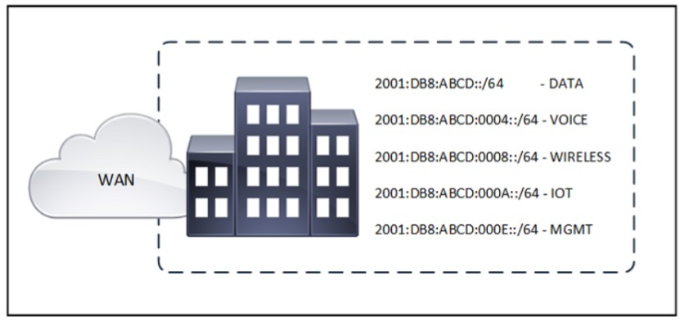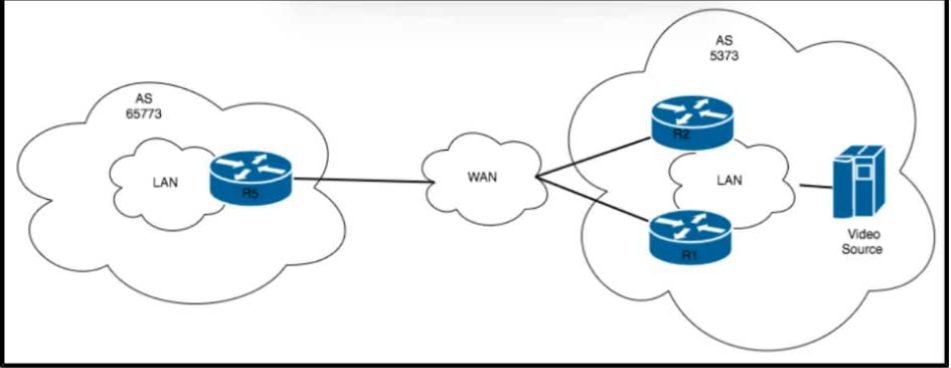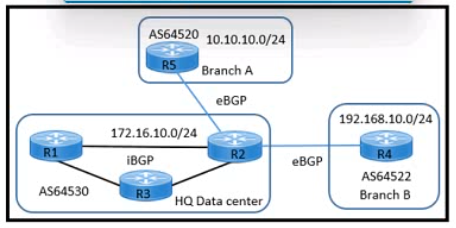Cisco 300-420 - Designing Cisco Enterprise Networks (ENSLD)
A network engineer must connect two sites across a public network using a secure tunneling technology that
supports multicast traffic. Which technology must be chosen?
An architect must address sustained congestion on the access and distribution uplink of network. QoS has already been implemented and optimized, but it is no longer effective in ensuring optimal network performance. Which two solutions should the architect use to improver network performance? (Choose two)
Which two statements describe source trees in a multicast environment? (Choose two.)

Refer to the exhibit A network administrator plans to announce the site subnets to the WAN using route summarization instead of announcing every subnet. What is the smallest summary route that should be used to encompass all subnets at the site?
An architect is designing a network solution for a customer The network is IPv6-only with 1000 hosts. The design must provide external access to up to 10 concurrent IPv6 hosts to allow communication with legacy IPv4 devices on an adjacent network. The customer set aside 10 IPv4 addresses to allow for one-to-one communication between hosts. Which solution must the architect select?
Refer to the exhibit.

An engineer is designing a routing solution for a customer. The design must ensure that a failure of network
10.1.0.0/24, 10.1.2.0/24, 10.2.1.0/24, or 10.2.3.0/24 does not impact the core. It also requires fast convergence
time during any link failover in the core or access networks. Which solution must the engineer select?

Refer to the exhibit. A company specializing in VoD content creation has two offices in a separate multicast domain connected by a WAN link. BGP communication has been established between the offices. Clients are inside the LAN in each office. In AS5373. R2 has been selected as RP. What must the network architect design to deliver VoD content to clients in AS65773?
What is a benefit of using VRRPv3 as compared to VRRPv2?

Refer to the exhibit. A network engineer with an employee ID: 4384:99:754 must design a BGP solution based on these conditions:
Traffic sessions occur between the branches and the data center.
Branch B has limited resources to process routing updates.
HQ must filter out all prefixes from branch A to R4.
Which outbound route filtering (ORF) solution must the engineer choose?
An architect is creating a migration strategy for a large organization in which the choice made by the application between IPv6 and IPv4 is based on the DNS request. Which migration strategy does the architect choose?



